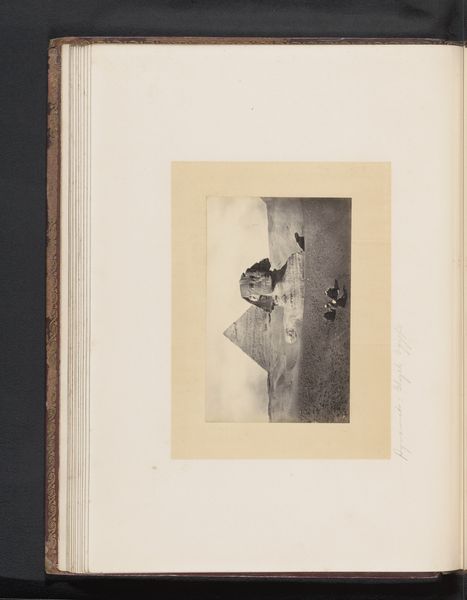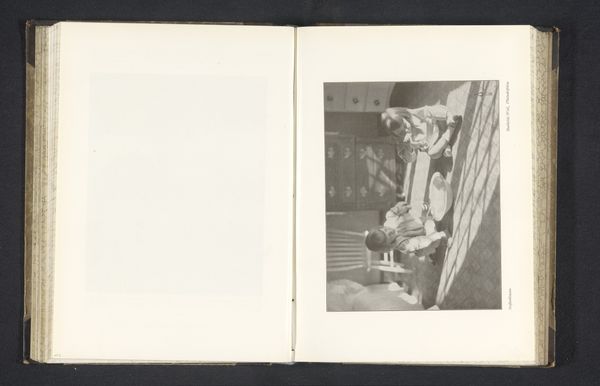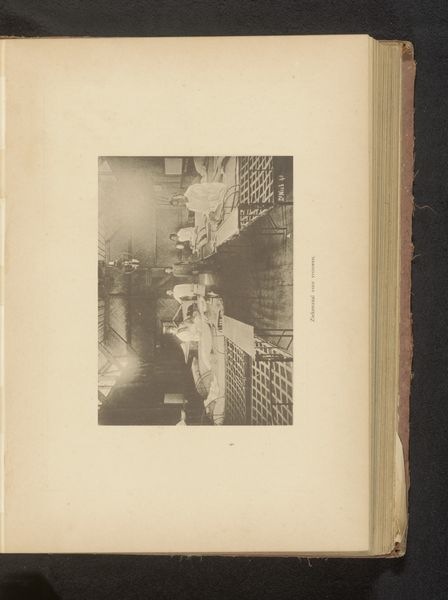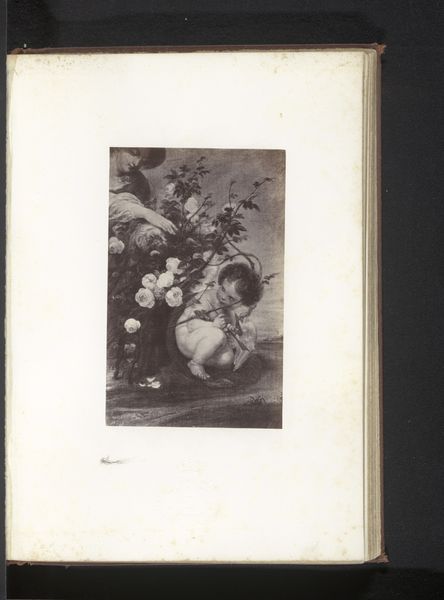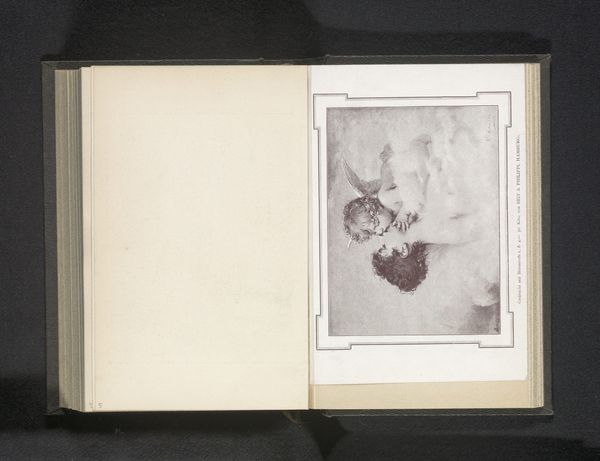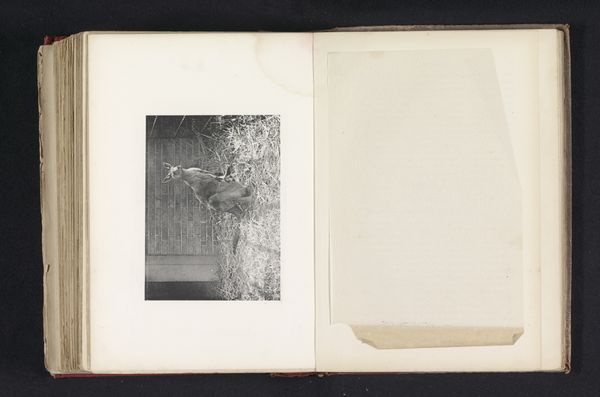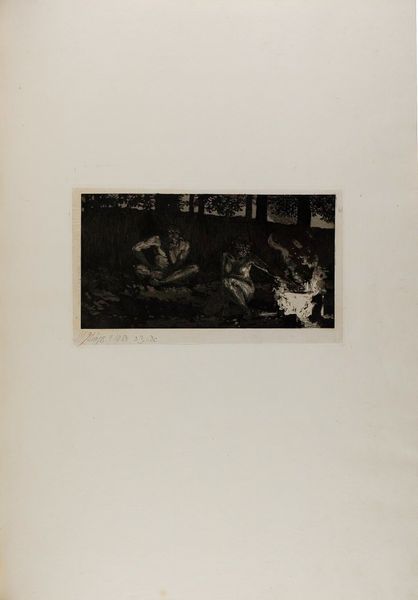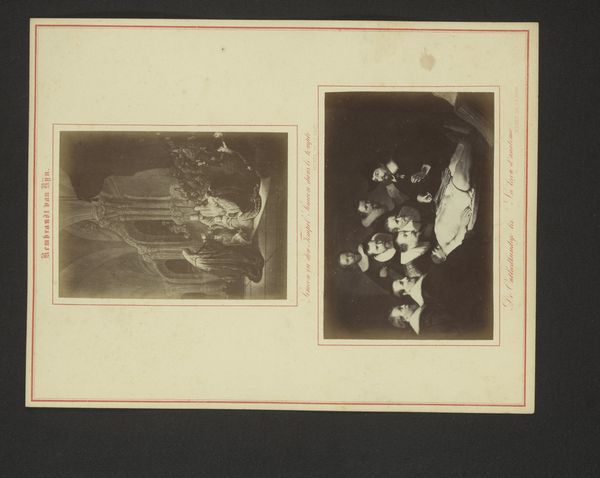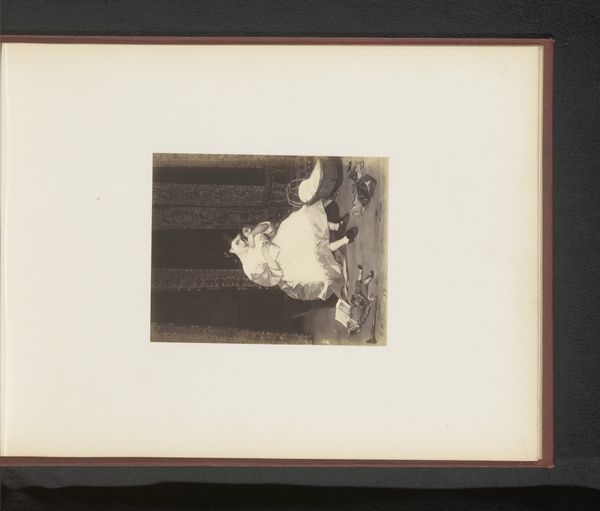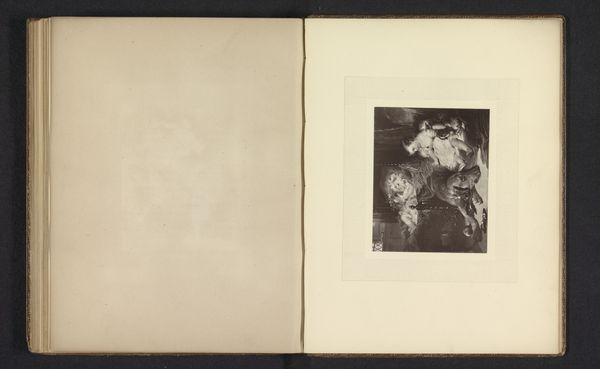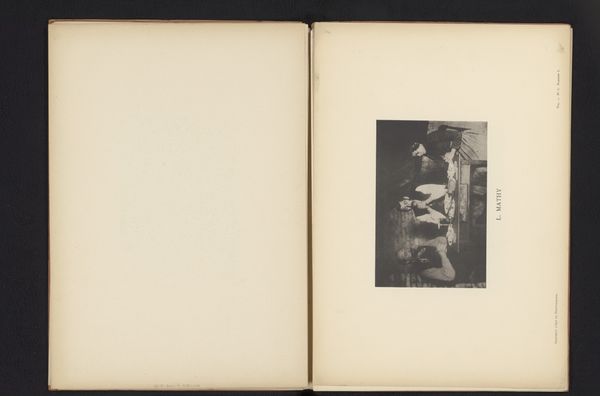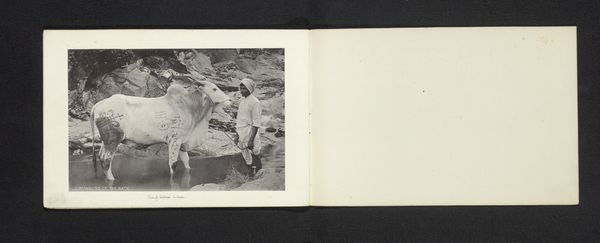
drawing, print, etching, paper
#
drawing
# print
#
etching
#
charcoal drawing
#
figuration
#
paper
#
line
#
academic-art
Dimensions: 271 × 215 mm (image); 359 × 255 mm (plate, approx.); 349 × 245 mm (primary support); 788 × 575 mm (secondary support, approx.)
Copyright: Public Domain
Curator: Immediately, I'm struck by the stark contrasts, the light versus the dark. The figure, suspended mid-motion, is framed by a dense, shadowy background, creating a visual drama that draws the eye directly to her. Editor: Exactly. What we’re seeing here is “For Everyone, plate eight from A Life,” created in 1884 by Max Klinger. It's an etching on paper, currently residing at the Art Institute of Chicago. Klinger was deeply involved with symbolism, wasn’t he? Curator: Very much so. He was masterful at layering imagery and challenging social mores. The ballerina here becomes more than just a dancer. She's a figure of idealized femininity, poised for performance under the male gaze that populates the auditorium in the background. Editor: I'm wondering if that contrast serves another purpose structurally? Look how the geometry of the stage and orchestra pit thrust her into our space, even as that throng in the back stays flattened. The line work seems deliberately uneven in places. Curator: Absolutely. Think about the broader implications. Dance has frequently symbolized freedom, even revolution—so a figure of female empowerment observed in a performative arena, as if entombed in a symbolic prison for her talents, has heavy reverberations. We remember who watches whom. Editor: Yet, is this 'for everyone,' as the title suggests? Does the experience truly become a communal endeavor when mediated through spectatorship? The artist, like the dancer, relies on witnesses, even judges. Curator: Yes. And the "life" the full suite is supposed to embody certainly touches on social power. Klinger explores these ideas with his signature blend of the beautiful and the grotesque—the almost cartoonish quality of the men's faces, with what could be seen as animalistic traits—serve to indict a form of toxic masculinity prevalent at the time, for how they might see woman. Editor: Klinger’s choice of etching allows for that exquisite control, wouldn’t you say? To juxtapose darkness and refinement in a singular view seems incredibly hard to resolve. Curator: Klinger's use of symbolism encourages dialogue to take place in a kind of liminal dreamspace. It reminds us of the weight, fragility, and continuity of woman in artistic memory. Editor: It does open a portal, doesn’t it? To view those memories is an incredible honor, now.
Comments
No comments
Be the first to comment and join the conversation on the ultimate creative platform.
